Santa Cruz Hightower 4
Wheel Size: 29’’ front and rear
Suspension Travel:
- Frame: 150 mm
- Fork: 160 mm
Geometry highlights:
- Sizes offered: S, M, L, XL, XXL
- Headtube angle: 63.9° (Low), 64.2° (High)
- Reach (size L): 478 mm
- Chainstay length (size L): 440 mm
Frame material: Carbon fiber
Price: Complete bikes starting at $4,999 USD (build details below)
More specs (click to expand):
Blister’s Measured Weight: 33.8 lbs / 15.33 kg (GX AXS, Size Large)
Test Location: Colorado
Reviewer: Dylan Wood: 5’10.5”, 160 lbs / 179 cm, 72.5 kg
Test Duration: 4 months
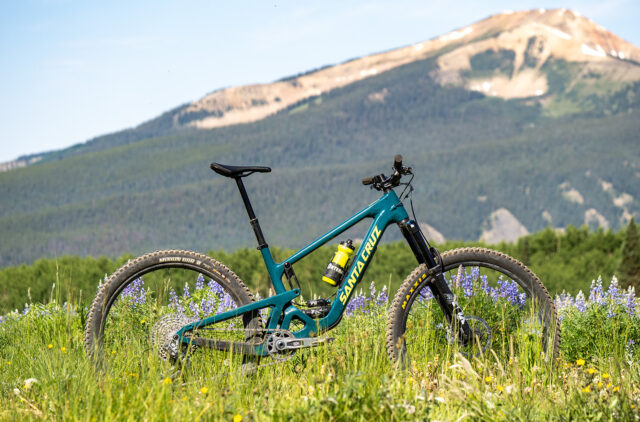
Intro
Hot on the heels of the updated Bronson, the Santa Cruz Hightower is the next bike in the brand’s lineup to get a refresh — but there’s more to the Hightower update than we expected.
Long positioned as Santa Cruz’s “one-bike quiver” option, the Hightower 4 follows along with some of the same updates seen on the Bronson, but the Hightower has also grown in travel, up to 150 mm rear / 160 mm front (from 145 mm / 150 mm).
Despite what its familiar aesthetic might suggest, Santa Cruz has revisited just about everything from suspension design to geometry. We’ve been riding the new Hightower for the past 4 months, but before we get into our on-trail takeaways, let’s see just how far they went with their updates.
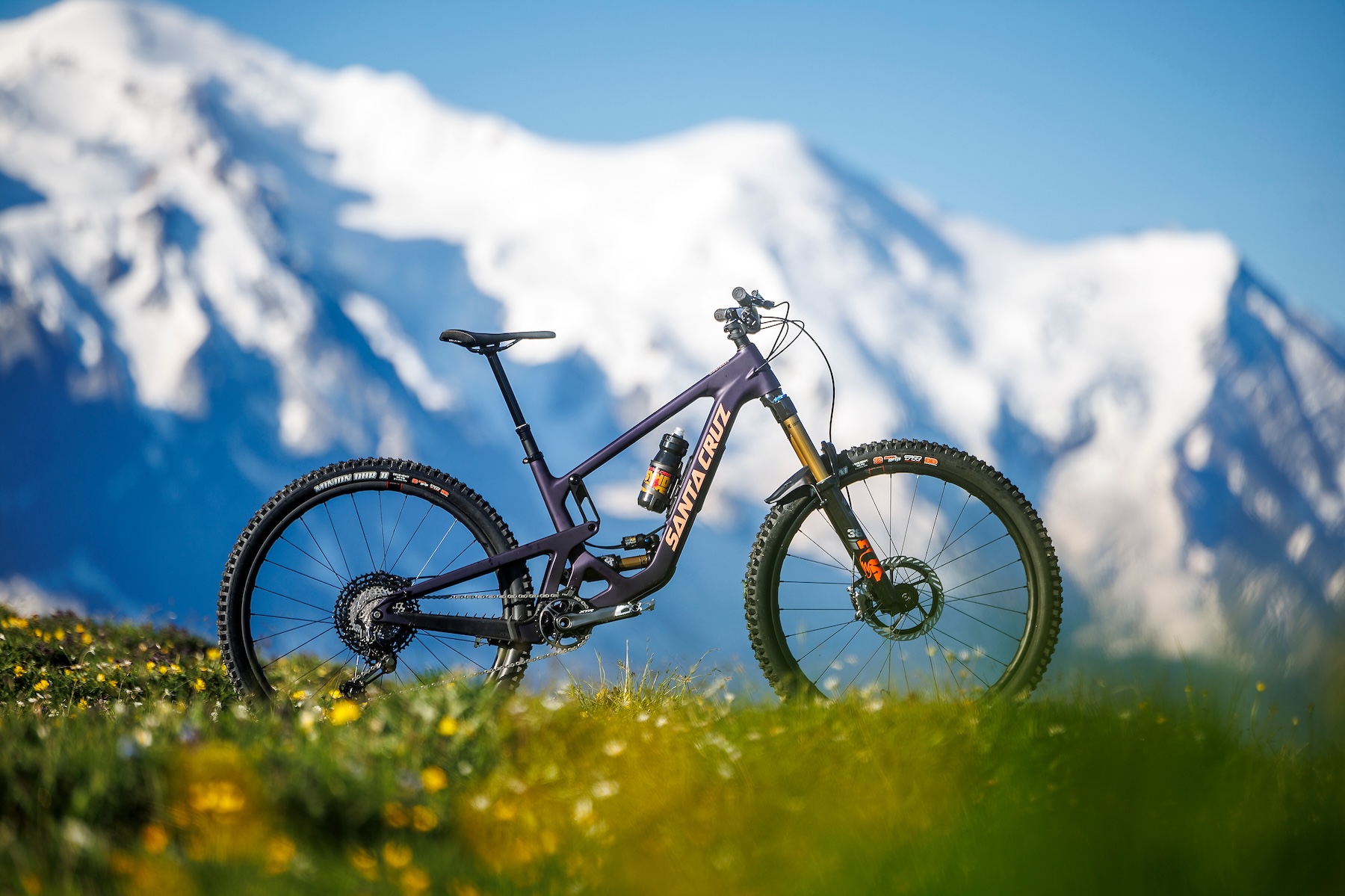
The Frame
For now at least, the Hightower is a carbon-only offering, with Santa Cruz’s typical split between the two grades of “C” and “CC” frames. The C-grade frames are used on the three lower-tier builds, while the CC-grade frames drop some weight at the cost of a higher price tag.
The Hightower also gets Santa Cruz’s latest version of the VPP suspension platform. By shifting the shock slightly down and forward, Santa Cruz was able to decrease anti-squat and correspondingly lower pedal kickback, which should result in less feedback through the pedals as the bike responds to bumps. The new frame shape also has a two-pillar structure that frames the shock; this makes checking sag a bit easier while also providing a slight aesthetic update on an otherwise familiar design language.
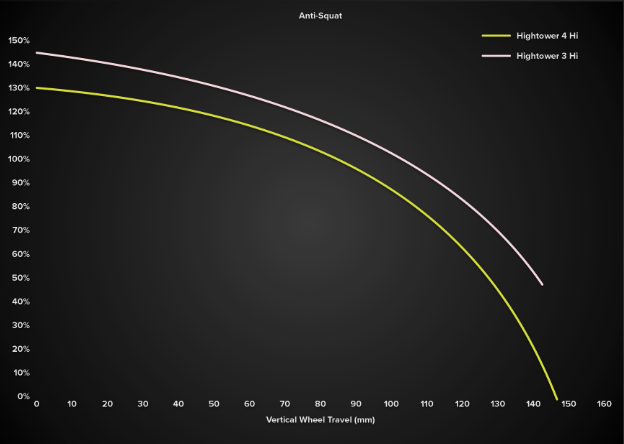
As with the revised Bronson, Santa Cruz has made a fairly strong gesture of commitment to electronic shifting on the new Hightower — while the C frame retains internal cable routing, the CC frame foregoes any routing for cable-actuated shifting. Santa Cruz isn’t the only manufacturer to be doing this (see the Specialized Stumpjumper 15), but I can’t help but question the “why” behind the decision. SRAM’s AXS system is seeing continued market penetration, but I still think that plenty of folks are happy with the lower cost and serviceability of good old-fashioned mechanical shifting (or maybe I’m a luddite).
That aside, the new Hightower gets you Santa Cruz’s familiar Glovebox frame storage, which allows for hiding away snack and tools, and there’s plenty of space for a water bottle. Santa Cruz also kept ISCG-05 tabs to allow for chain guides or bash guards.
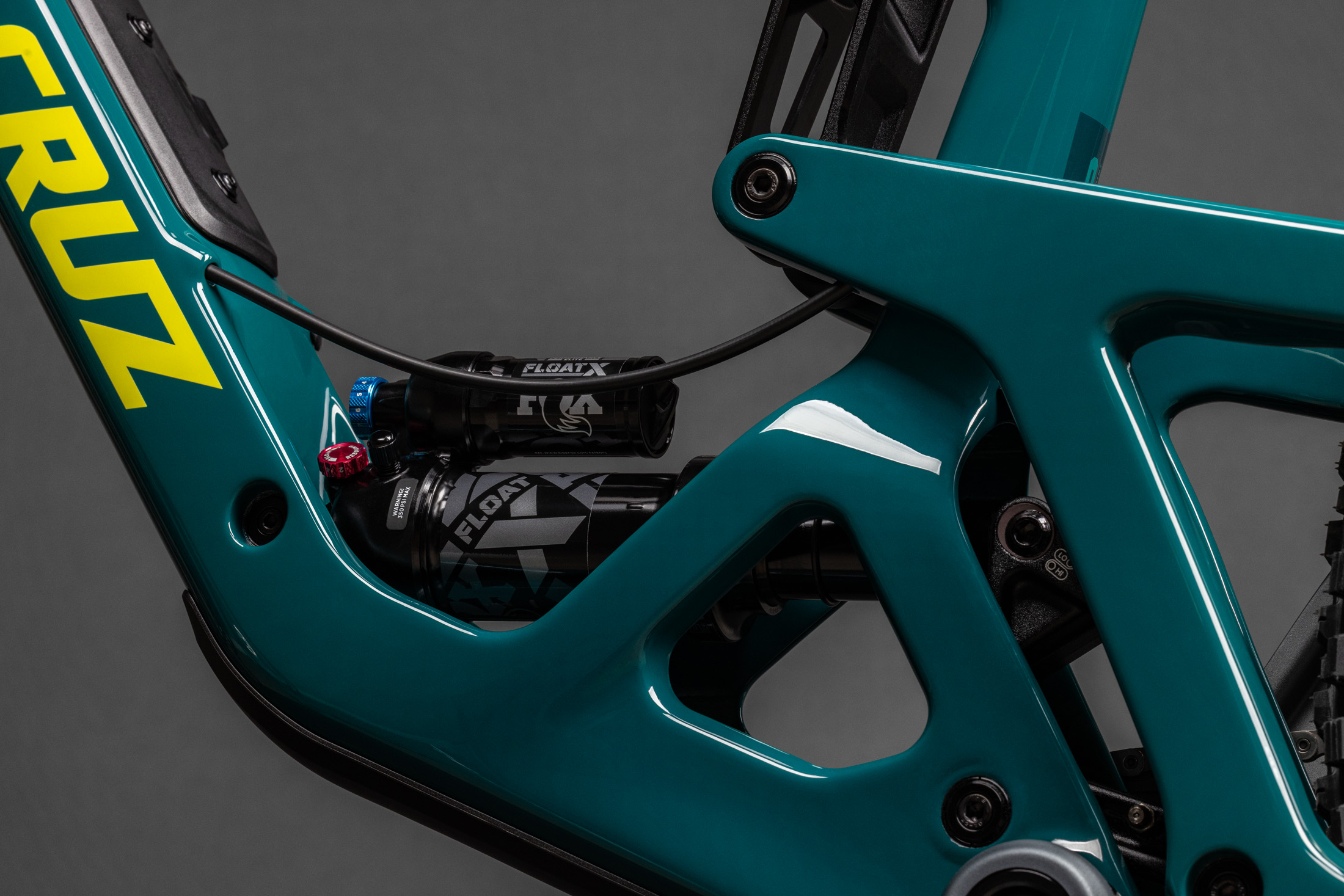
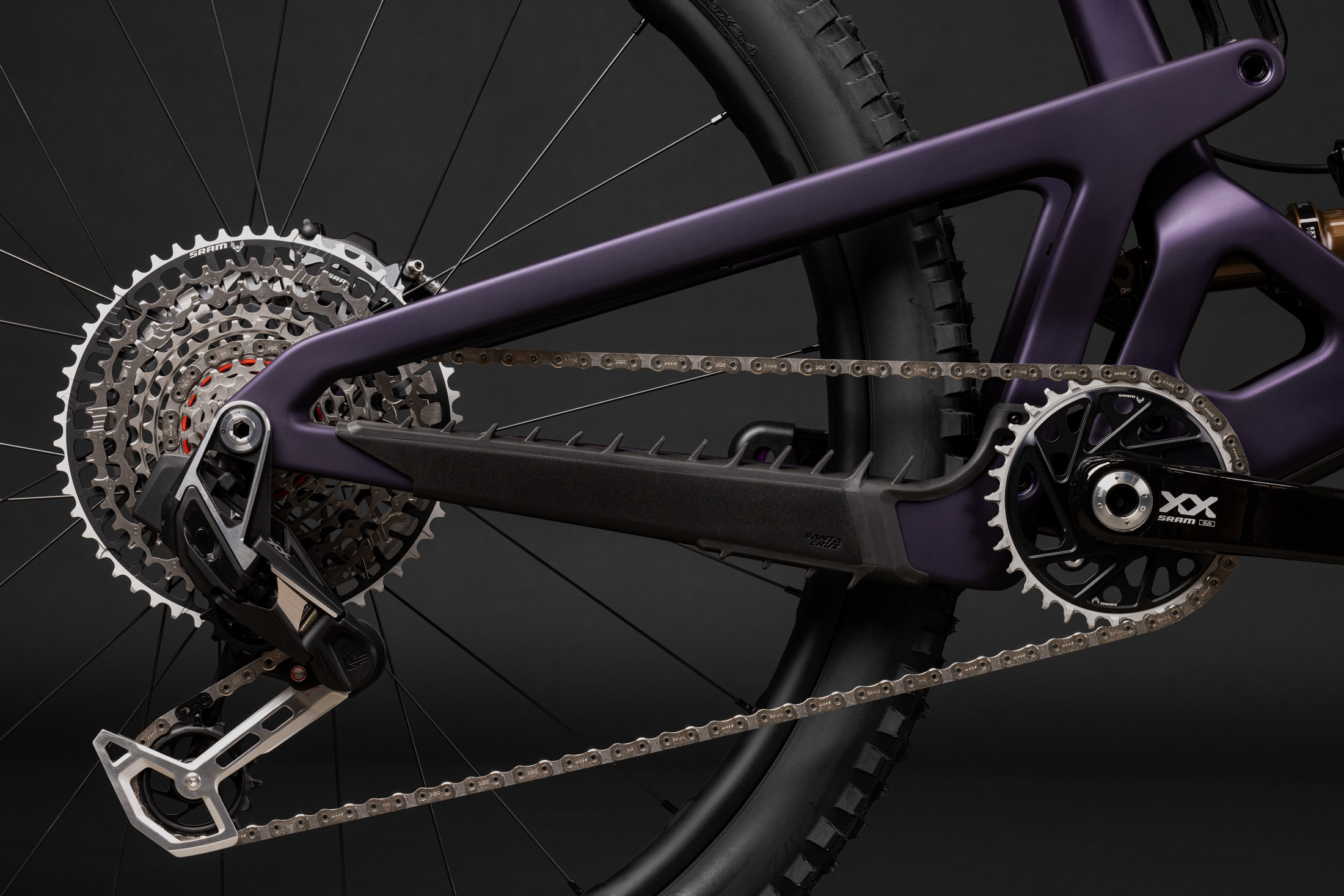
Fit & Geometry
The new Hightower features plenty of geometry updates, many of which are rather similar to the updated Bronson. The Hightower’s headtube angle drops to 63.9° in its Low setting or 64.2° in High (switchable via a flip chip). Its chainstay lengths are now size-specific across the board, with the size Large getting 440 mm chainstays; lengths change at 2–3 mm intervals between each smaller or larger size.
Stack heights have also grown on the new Hightower, at 641 mm on the size Large (for the High position; it’s 643 mm in Low). Other highlights include a steep 78.2° effective seat tube angle (High position; 77.9° in Low), and a 29 mm bottom bracket drop (High position; 32 mm in Low).
Check out the geometry chart below for the full breakdown:

The Builds
As with most of their bikes, Santa Cruz offers lots of build options for the Hightower. Nine different builds cover everything from the $4,999 “R” build with cable-actuated shifting to the $11,399 “XTR RSV” build with a Shimano XTR Di2 Transmission, Fox Factory suspension, and carbon wheels from Reserve.
Aside from a RockShox Lyrik and Fox Float Rhythm shock on the R & 70 builds, all other build options get Fox 36 forks set at 160 mm of travel, paired with Fox Float X shocks. You can also buy a Hightower C frame with a Fox Float X Performance Elite shock for $3,599, and a Hightower CC frame with a FOX Float X Factory shock for $4,049.
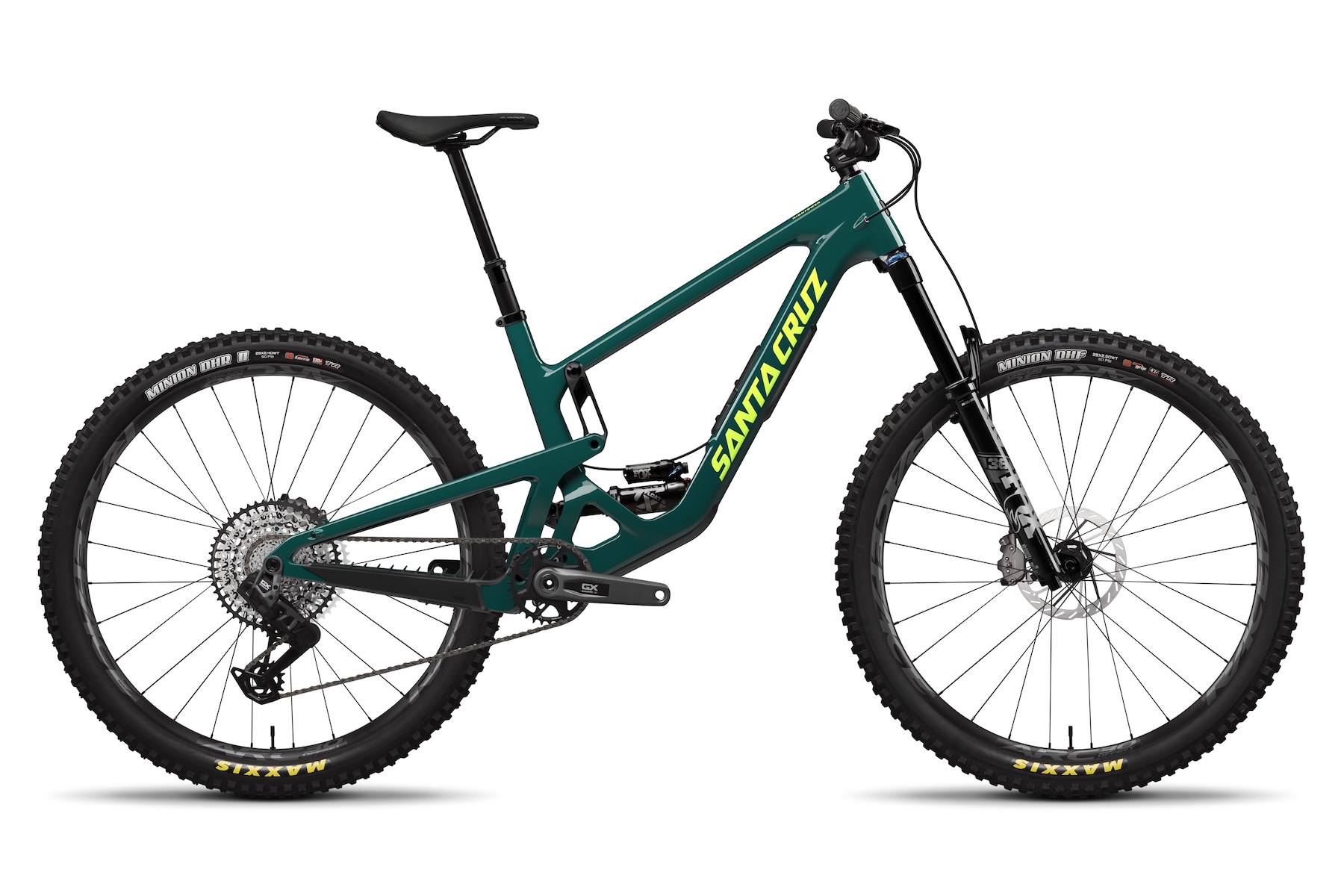
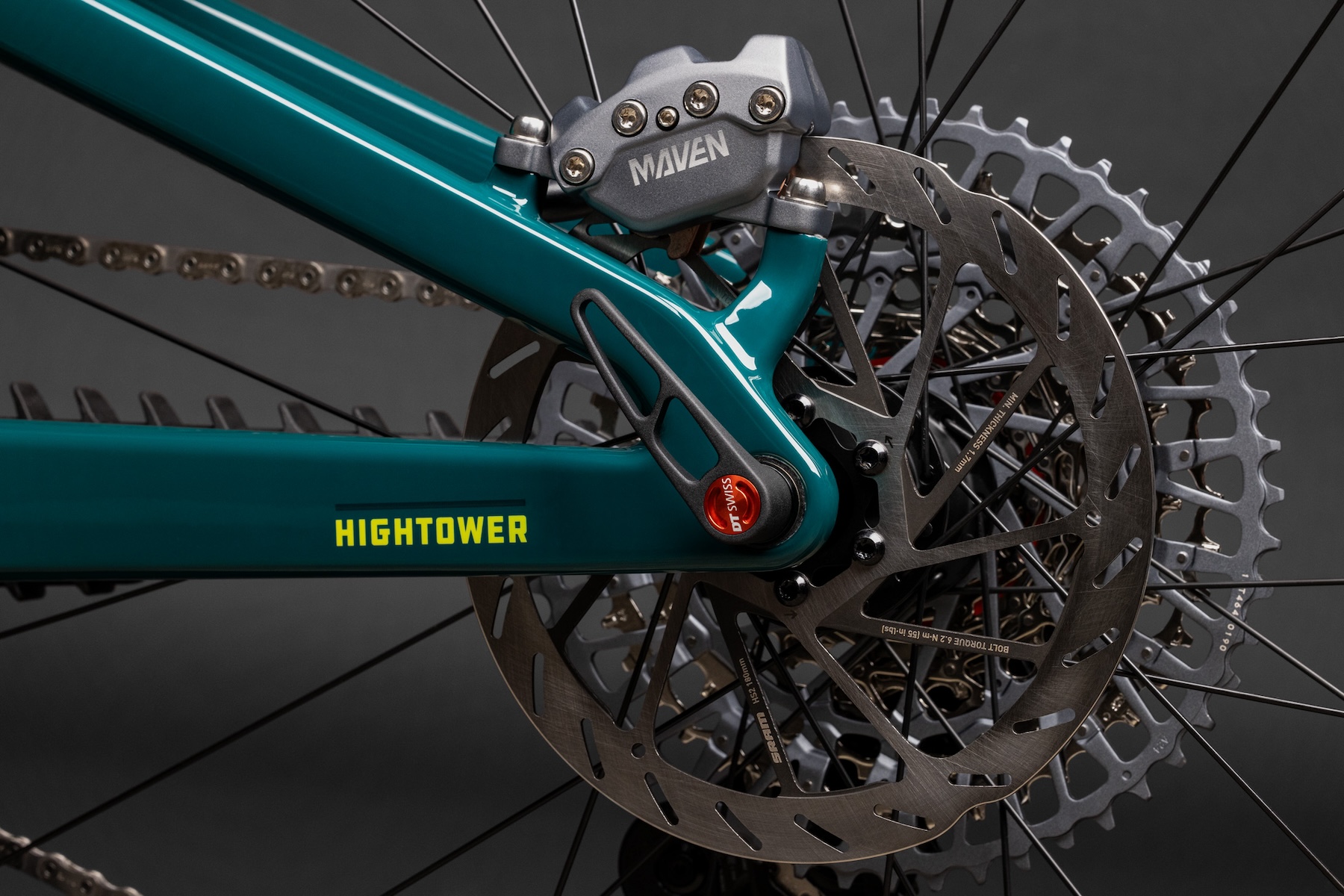
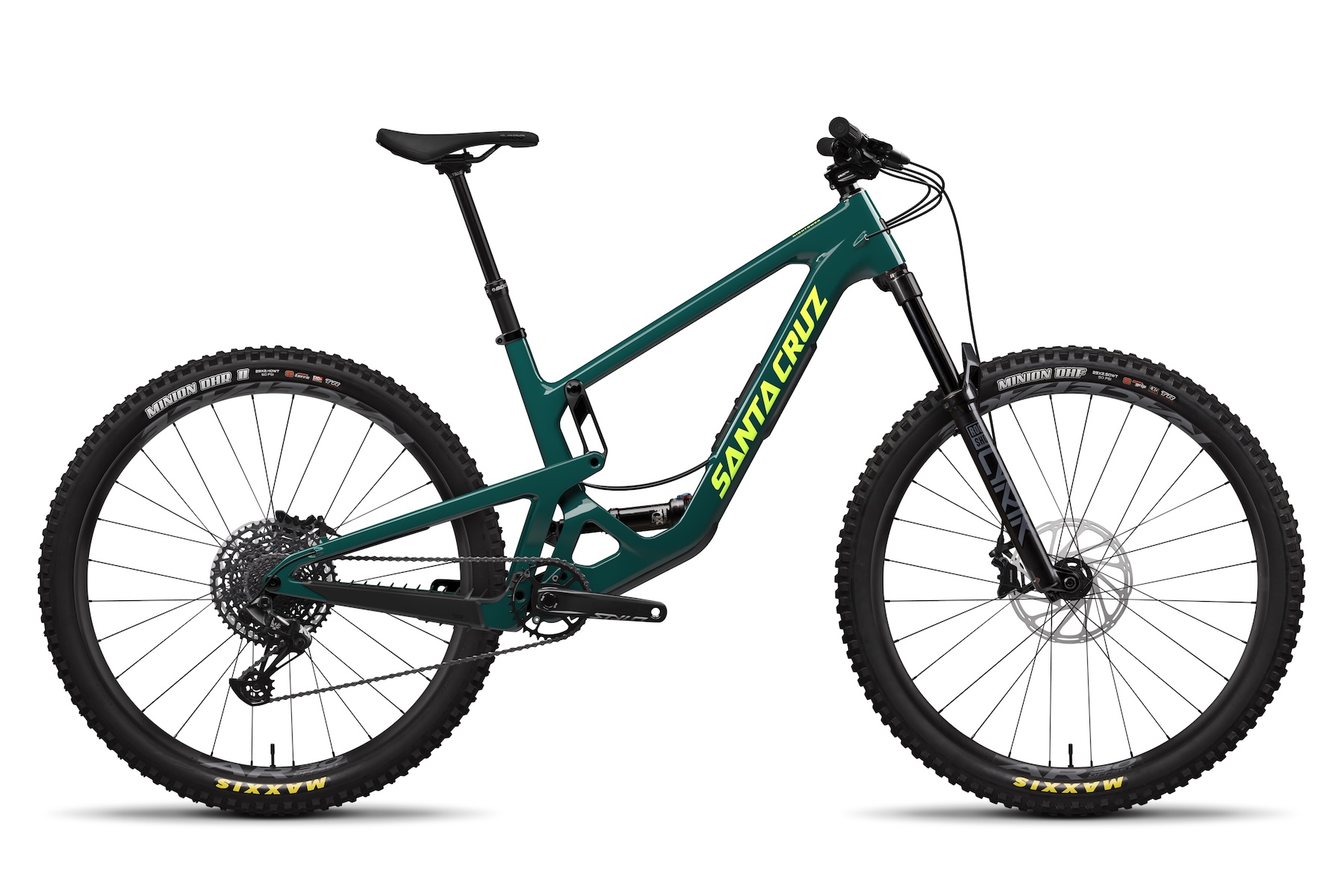
All of the build highlights are as follows:
- Drivetrain: SRAM Eagle NX
- Brakes: SRAM DB8 (200 mm rotors)
- Fork: RockShox Lyrik Base (160 mm)
- Shock: Fox Float Performance
- Wheels: Reserve 30|TR AL or Raceface AR30 rims / SRAM MTH hubs
- Dropper Post: SDG Tellis
- Drivetrain: SRAM Eagle 70
- Brakes: SRAM DB8 (200 mm rotors)
- Fork: RockShox Lyrik Base (160 mm)
- Shock: Fox Float Rhythm
- Wheels: Reserve 30|TR AL rims / SRAM MTH hubs
- Dropper Post: SDG Tellis
- Drivetrain: SRAM Eagle GX
- Brakes: SRAM DB8 (200 mm rotors)
- Fork: Fox 36 Performance (160 mm)
- Shock: Fox Float X Performance
- Wheels: Reserve 30|TR AL or Raceface AR30 rims / DT Swiss 370 hubs
- Dropper Post: OneUp V3
- Drivetrain: SRAM Eagle 90
- Brakes: SRAM Maven Base (200 mm front / 180 mm rear rotors)
- Fork: Fox 36 Performance (160 mm)
- Shock: Fox Float X Performance
- Wheels: Reserve 30|TR AL rims / DT Swiss 370 hubs
- Dropper Post: OneUp V3
- Drivetrain: SRAM GX Transmission
- Brakes: SRAM Maven Bronze (200 or 180 mm front / 180 mm rear rotors)
- Fork: Fox 36 Performance Elite (160 mm)
- Shock: Fox Float X Performance Elite
- Wheels: RaceFace ARC 30 or Reserve 30|SL AL 6069 rims / DT Swiss 370 hubs
- Dropper Post: OneUp V3
- Drivetrain: SRAM X0 Transmission
- Brakes: SRAM Maven Silver (180 mm front / 180 mm rear rotors)
- Fork: Fox 36 Factory (160 mm)
- Shock: Fox Float X Factory
- Wheels: Reserve 30|SL AL 6069 or Raceface ARC 30 rims / Industry Nine 1/1 hubs
- Dropper Post: OneUp V3
- Drivetrain: SRAM X0 Transmission
- Brakes: SRAM Maven Silver (180 mm front / 180 mm rear rotors)
- Fork: Fox 36 Factory (160 mm)
- Shock: Fox Float X Factory
- Wheels: Reserve 30 HD carbon rims / Industry Nine 1/1 hubs
- Dropper Post: OneUp V3
- Drivetrain: SRAM XX Transmission
- Brakes: SRAM Maven Ultimate (180 mm front / 180 mm rear rotors)
- Fork: Fox 36 Factory (160 mm)
- Shock: Fox Float X Factory
- Wheels: Reserve 30 HD carbon rims / Industry Nine Hydra hubs
- Dropper Post: OneUp V3
- Drivetrain: Shimano XTR Di2 M9250
- Brakes: Shimano XTR 9220 (203 mm front / 180 mm rear rotors)
- Fork: Fox 36 Factory (160 mm)
- Shock: Fox Float X Factory
- Wheels: Reserve 30 HD carbon rims / Industry Nine Hydra hubs
- Dropper Post: RockShox Reverb AXS B1
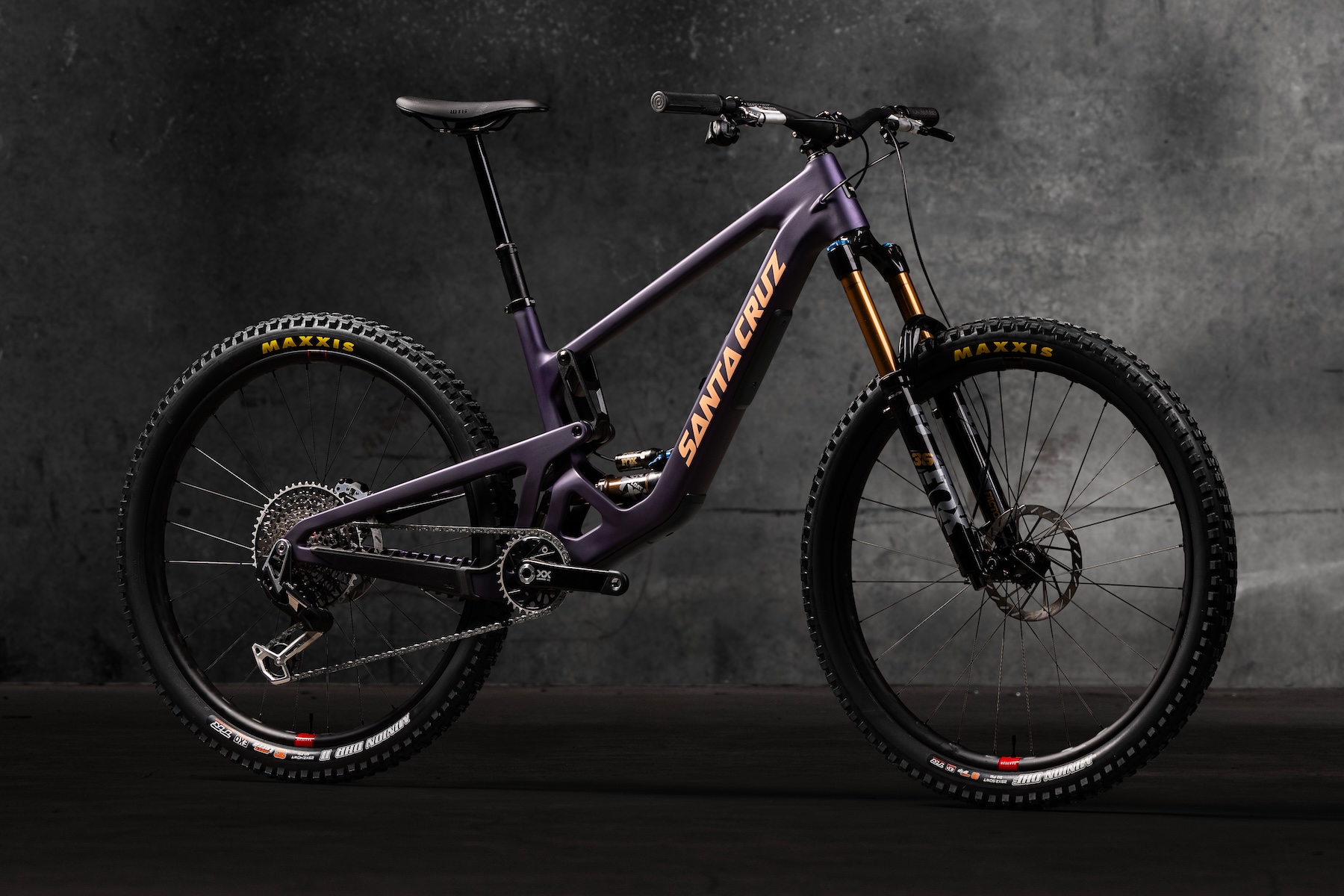
FULL REVIEW
Dylan Wood (5’10.5”, 160 lbs / 179 cm, 72.5 kg): Santa Cruz is currently on the 4th generation of the Hightower, a bike that was introduced as a do-it-all 29er. Since its inception, the Hightower has incrementally grown in suspension travel while also adopting more aggressive geometry. So, where has the California-based brand landed with the Hightower 4? I’ve spent the past four months riding the new Hightower to find out.

Fit & Geometry
Simon noted in his review of the Bronson 5 that Santa Cruz does a great job of keeping the fit of their bikes consistent across the lineup, and I got along very well with the Large Hightower, which should be no surprise given how much time I’ve spent on Large Santa Cruz mountain bikes throughout the years. At 5’10.5” / 179 cm, I’m right smack in the middle of Santa Cruz’s suggested sizing for the Large Hightower, and this is apparent when I throw a leg over the bike — the fit is familiar and comfortable.
Its moderate reach of 477 mm is countered nicely by a steep 77.9º seat tube angle (Large, “LO” geo flip chip position), creating a comfortable yet pedaling-friendly seated position. I had absolutely no problems achieving my 765 mm seat height on the Large Hightower, and if anything, I could have run a longer dropper post. Our “2025” Large Hightower 4 came with a 180 mm dropper, but I could have easily run a 210 mm one instead, and I’m happy to see that the “2026” Large Hightower 4s are coming with longer options.
I tend to prefer lower stack heights, and the Large Hightower 4 has a slightly higher stack height for its class at 643 mm (“LO” geo flip chip). I subsequently preferred to run the stem with just one 5 mm spacer between it and the headset, allowing me to get adequate weight on the front wheel for cornering. Overall, the Large Hightower fit me great, both on the uphills and downhills, and I certainly wouldn’t have wanted to be on the Medium nor XL Hightower.
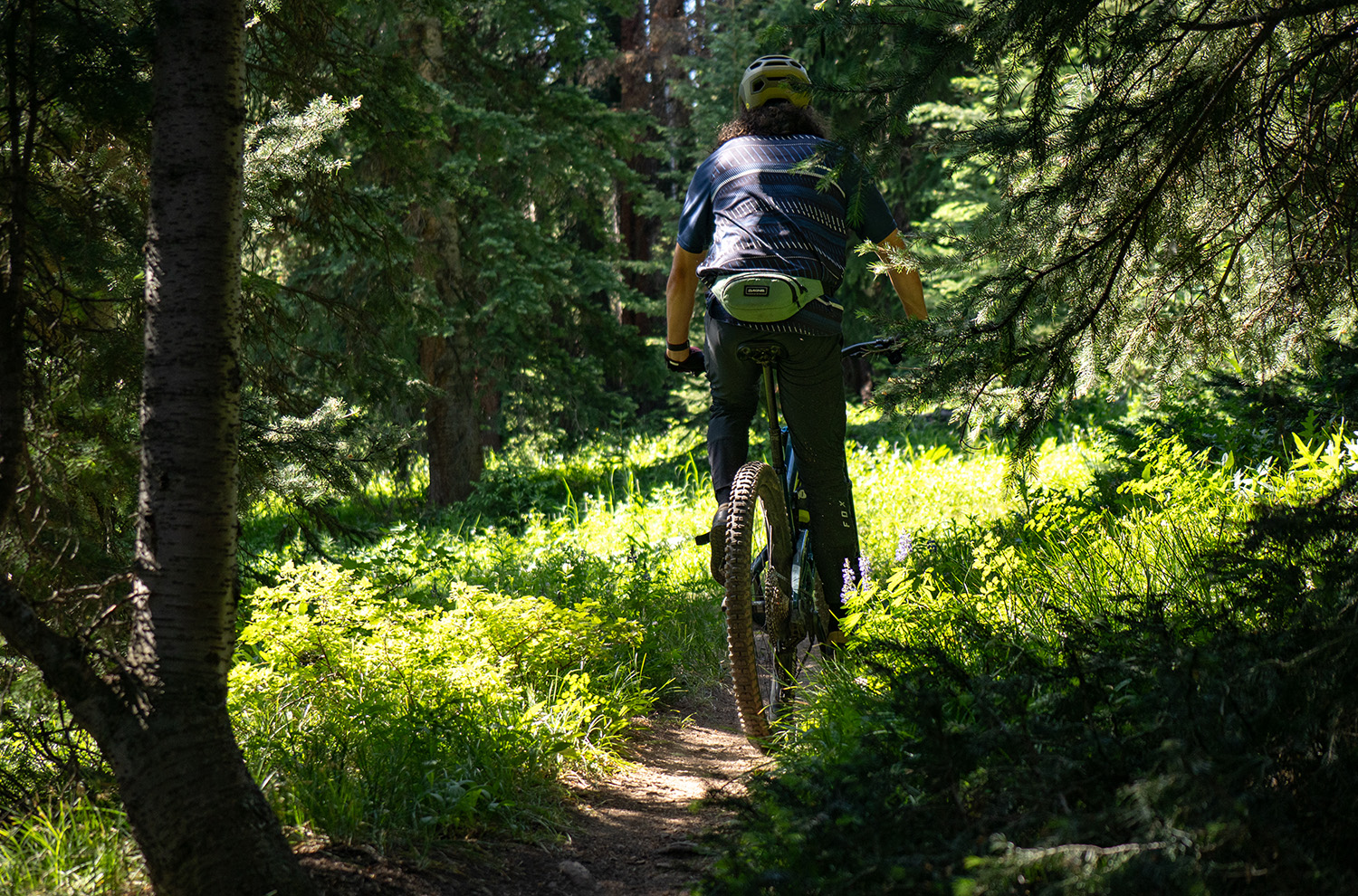
Climbing
The Hightower 4 combines great traction with moderate efficiency to create an adaptable pedaling platform. This latest Hightower is certainly a bit less efficient than the outgoing Hightower, but in return, the Hightower 4 is a very capable technical climber. Its rear wheel stays active when pedaling, absorbing bumps and remaining in contact with the trail, creating great traction. From steep, rooty sections to chunky uphill rock gardens, the Hightower 4 is a great tool for tackling tricky climbs.
It certainly isn’t the most efficient bike in its class, but it offers enough efficiency for folks who mostly prefer to grind climbs out from the saddle. The Hightower 4 can feel pretty squishy when pedaling aggressively out of the saddle. The climb switch on the Fox Float X rear shock does firm things up a bit for smooth roads and trails, but I think the Hightower is an efficient enough climber that I didn’t use the shock lockout for most climbs.
Geometry-wise, the Hightower’s moderate reach and chainstay lengths, coupled with a relatively steep seat tube angle, allowed me to adequately weight the front wheel on steep climbs. At 63.9º (“LO” geo flip chip), the Hightower does have a pretty slack head tube angle, but thanks to the rest of the geometry being well-sorted, I rarely ever struggled with the front end “wandering” on climbs.
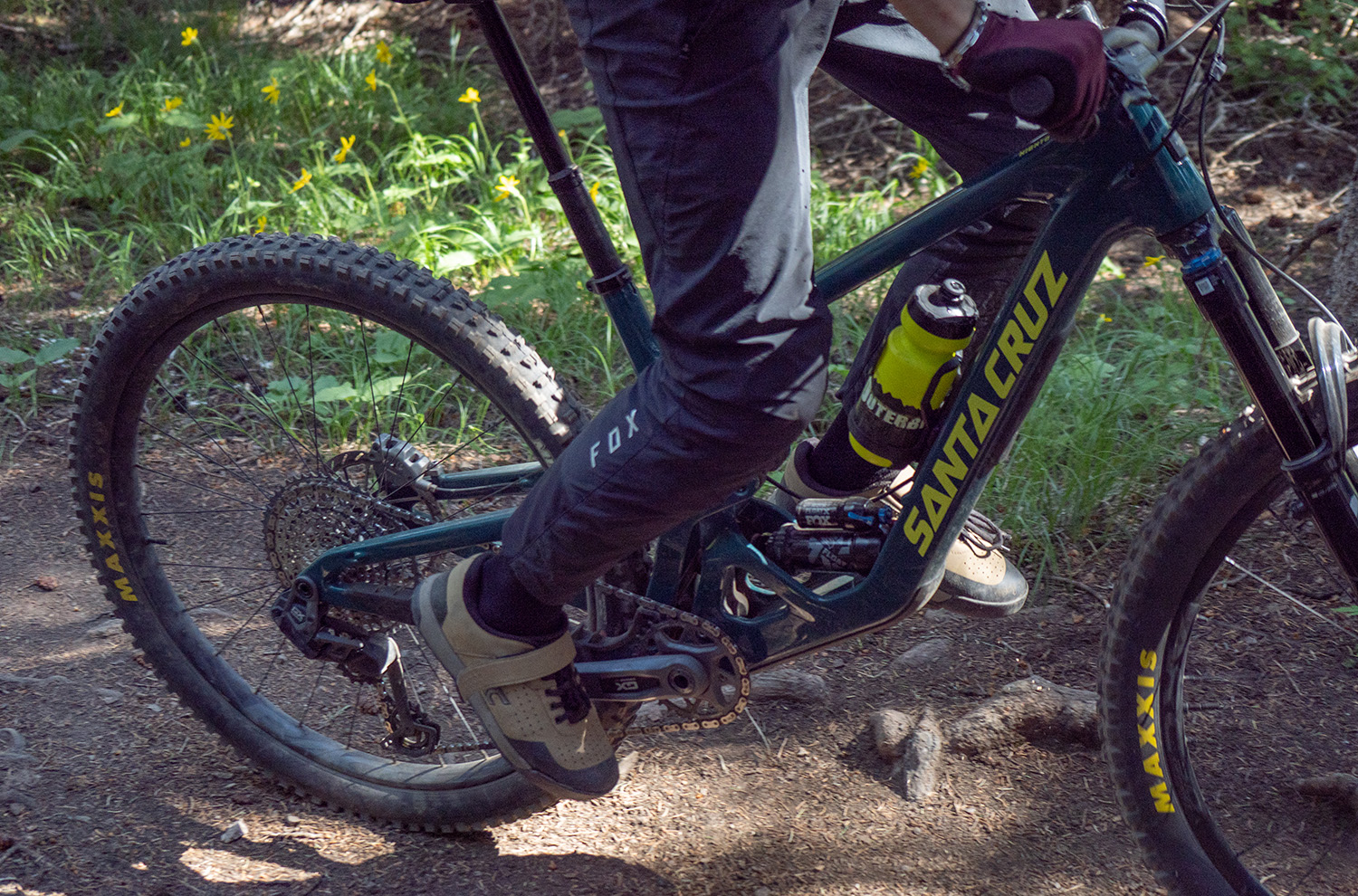
Descending
The Hightower 4 is a capable descender for the All-Mountain category, so much so that, three or four years ago, you could have easily gotten away with calling it an Enduro bike. In fact, some of Santa Cruz’s EWS athletes have been racing the Hightower instead of the Megatower. The latest Hightower combines capable geometry with plush suspension to create a capable and confident descender.
The Hightower is a stable bike, with a relatively long 1264 mm wheelbase (size Large). This gives it a big sweet spot to move about on the way down, letting the bike eat up much of the terrain under its wheels. Combine this with a stable-feeling ~64º head tube angle, and the Hightower is comfortable at high speeds. I find that the Hightower is a bike that prefers a slightly more forward riding stance, but it doesn’t punish a more neutral or rear-weighted one. With moderate 439 mm chainstays (size Large), the Hightower does a good job of balancing playfulness and maneuverability. I found it to be more playful and easier to get into the air than a full-on Enduro bike like the Megatower 2, though it isn’t the most playful bike in its class.
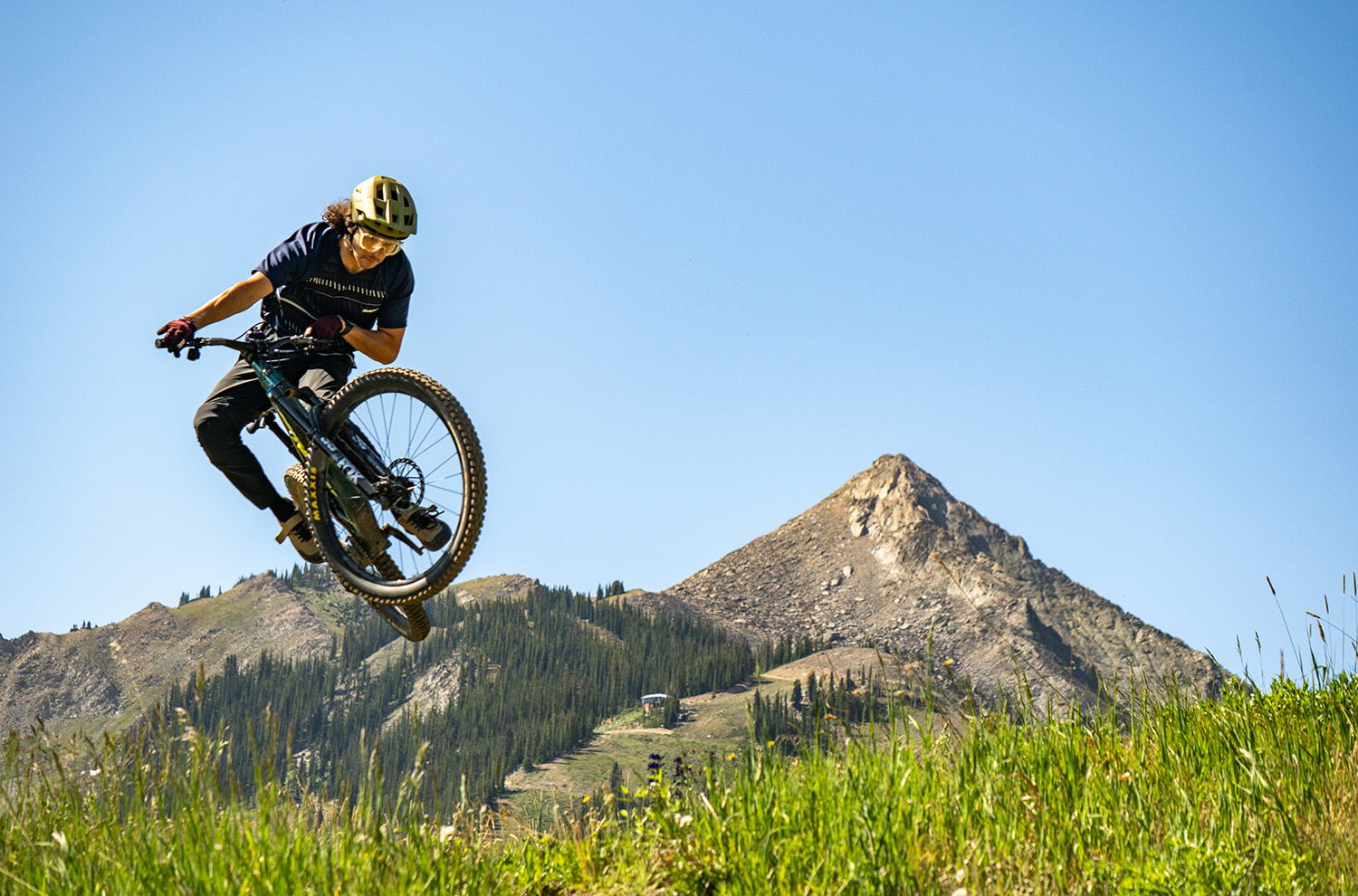
Traction under braking is quite good, and for most Trail riding out there, the Hightower encourages aggressive, fast riding without necessarily requiring it. It was rare for me to find myself wanting more capability out of the Hightower, but when I did, it was only on steep, chunky rock gardens or very large jumps and drops. For this reason, I think the Hightower is a great do-it-all option for folks who tend to prefer riding steeper, more technical terrain and want a bit more playfulness and efficiency than a full-on Enduro bike. The Hightower is also appropriate for strapping on a race plate and entering an Enduro every once in a while, and I might even pick it over something like the Megatower for flatter, longer, more pedaly stages. I also think it feels at home riding a lift-served bike park occasionally, though I wouldn’t necessarily beat it up there all day, every weekend.
I also played around a bit with the Hightower’s two different geometry settings. I found myself enjoying “HI” mode the most during our early riding season, when mostly mellow trails were open. I appreciated the quicker steering and higher bottom bracket in flat corners and tight switchbacks. But, for most other riding, when I was getting into steeper terrain and faster trails, I enjoyed the “LO” setting the most. It’s pretty easy to switch the bike between the two settings, and I think it’s worth it to position the flip chip in the best setting depending on the trail(s) you’ll be riding.
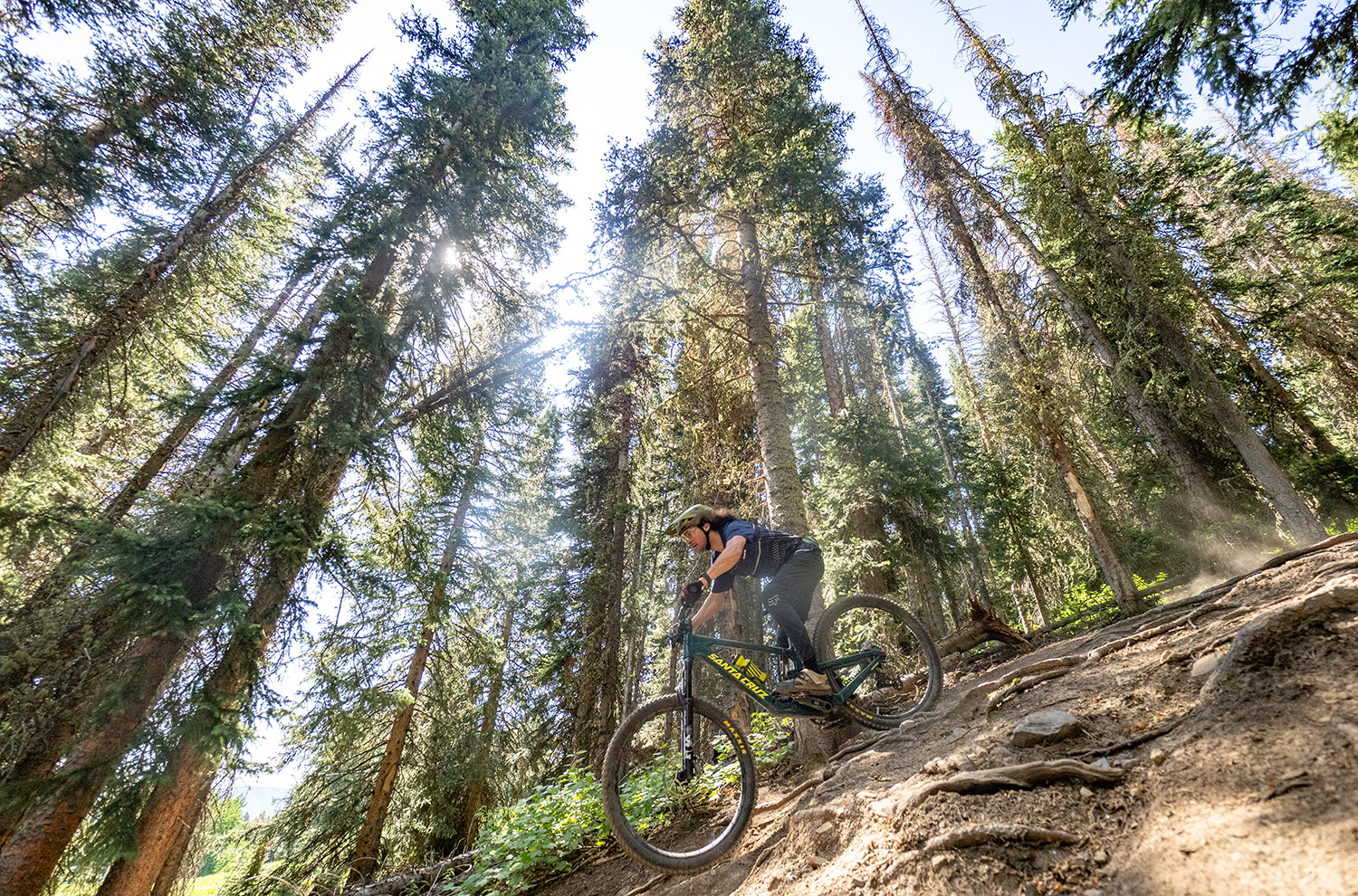
The Build
The GX AXS Hightower packs a good amount of value into the bike, and there aren’t any components on this bike I’d want to replace, though personally, I don’t think I’d want to go any cheaper on the Hightower’s available build kits.
The Fox Performance Elite suspension on the Hightower is a highlight, with the Grip X2 damper on the Float 36 up front providing plenty of adjustability. Although I was wishing for the new Fox 36 fork up front, and it’s great to see that the “2026” Hightower 4s will be coming with the new 36. I also got along great with the Fox Float X Performance Elite out back; it was easy to set up and dial in without too many adjustments.
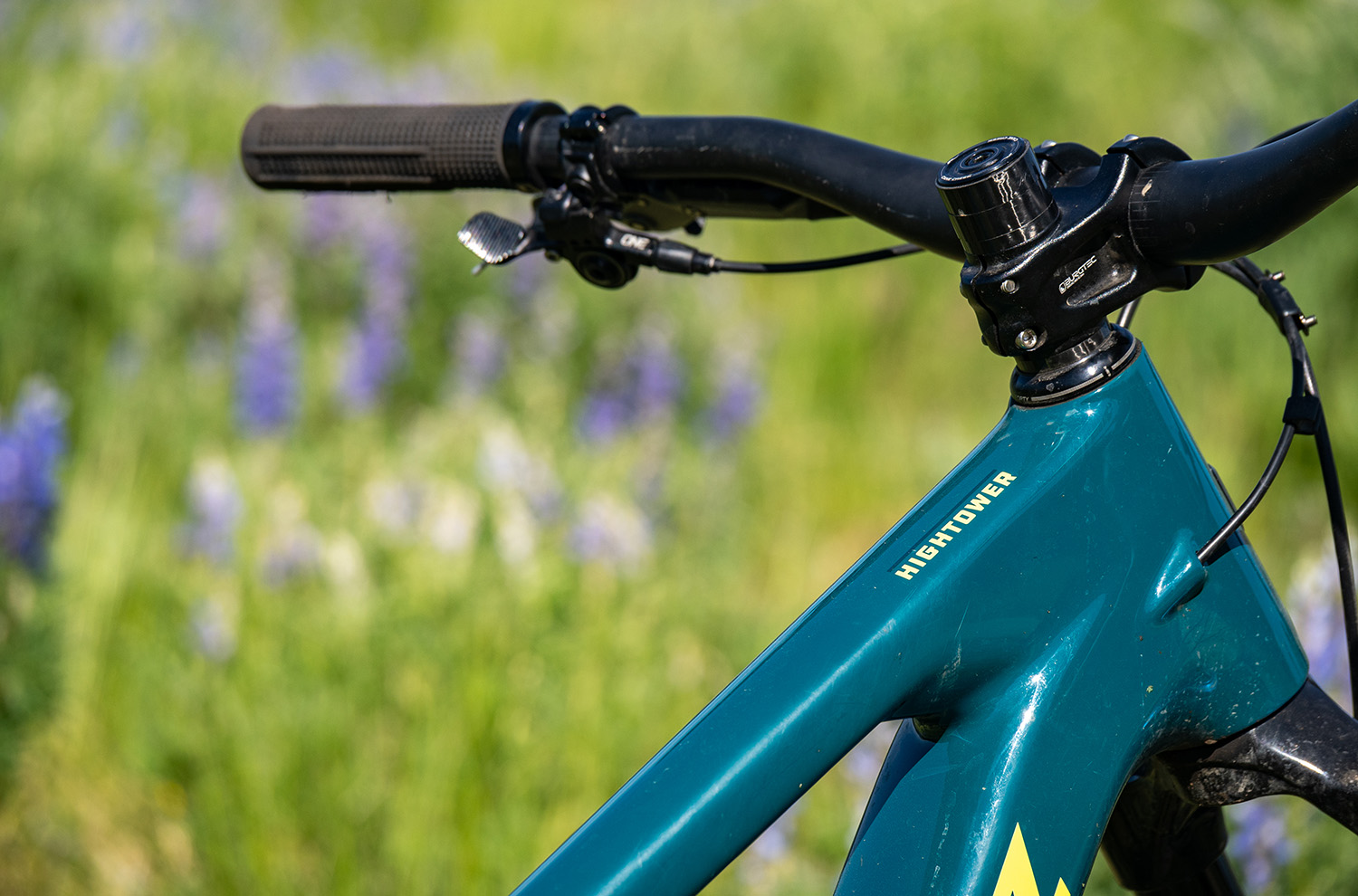
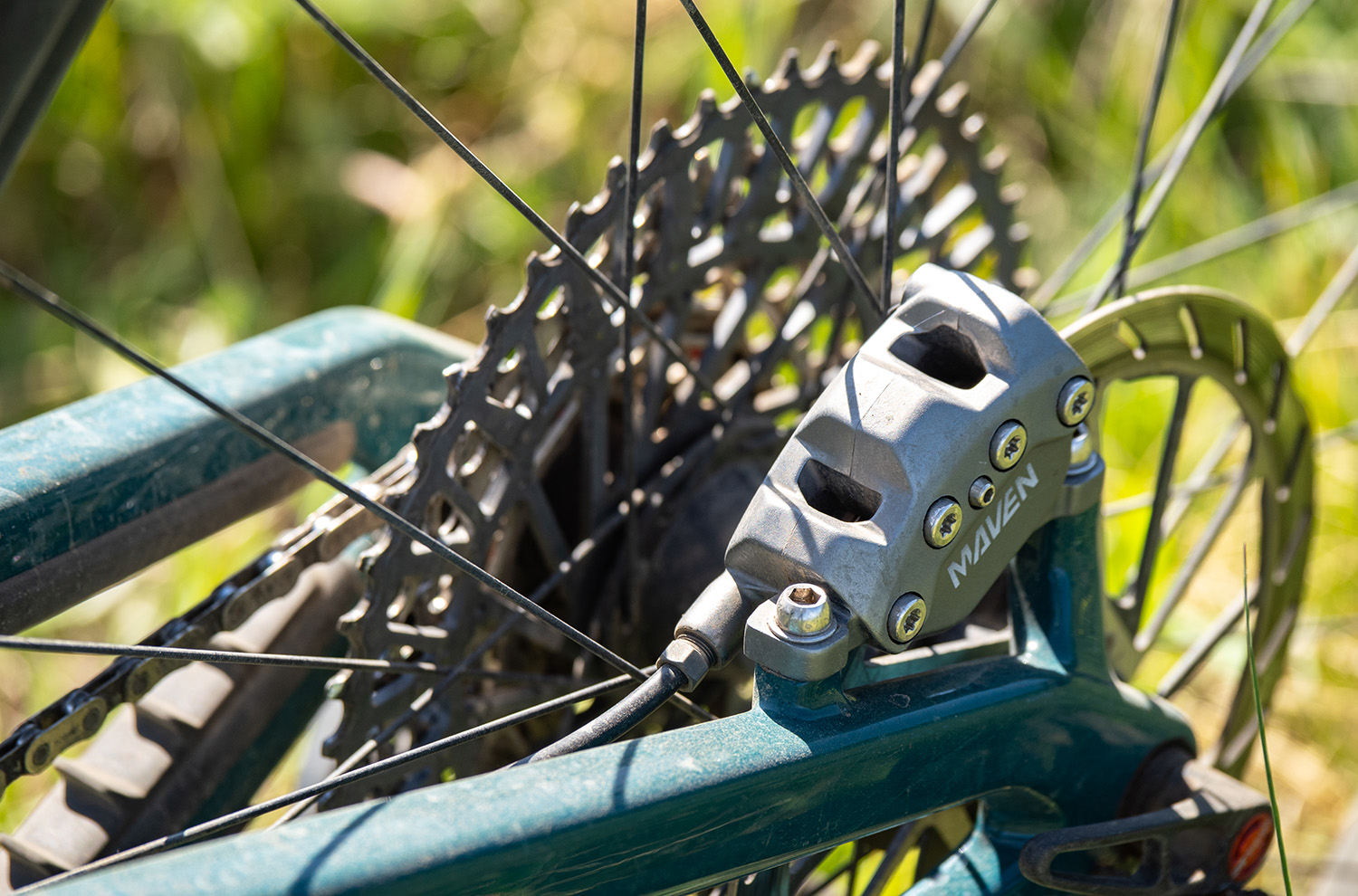
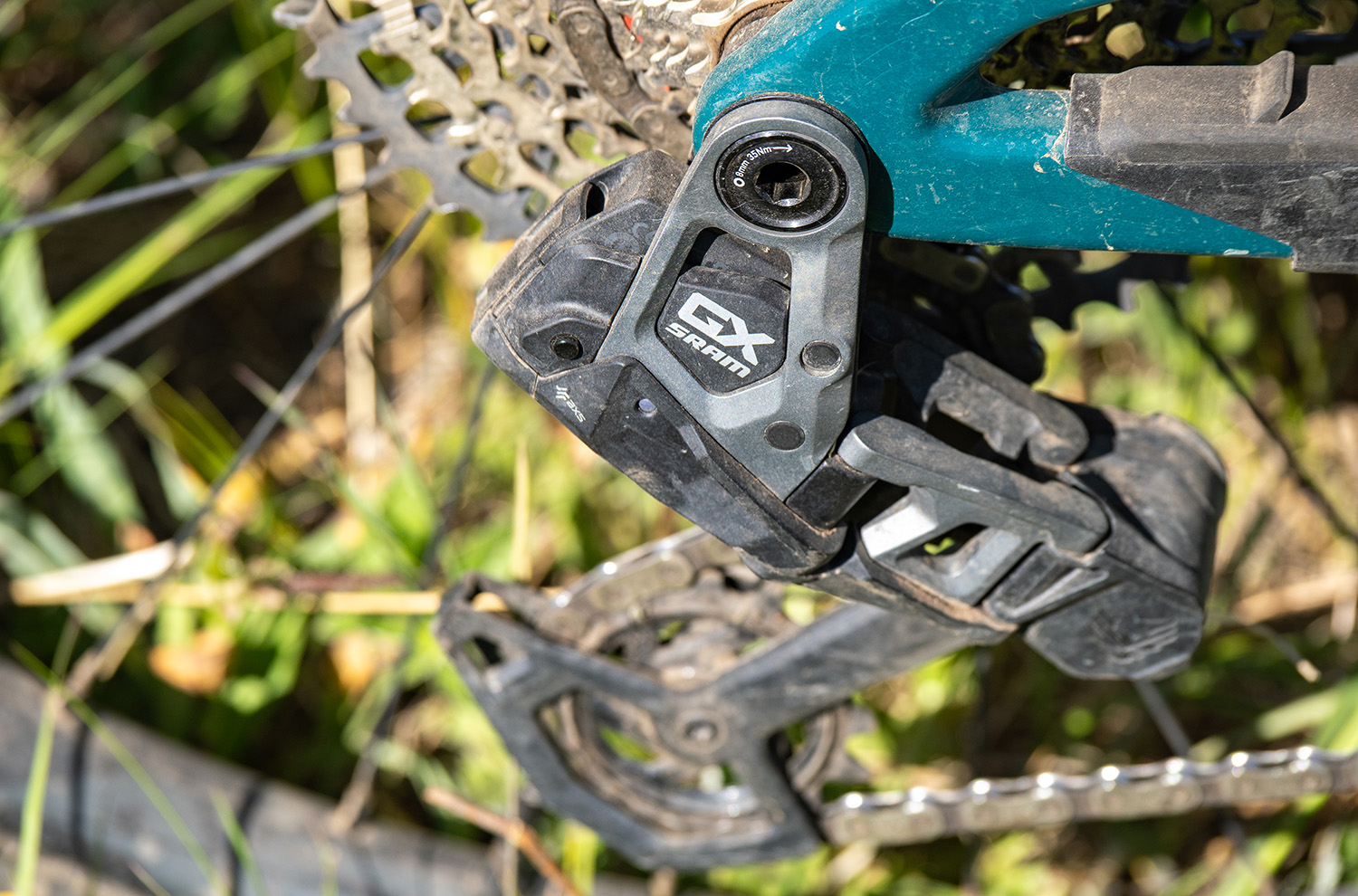
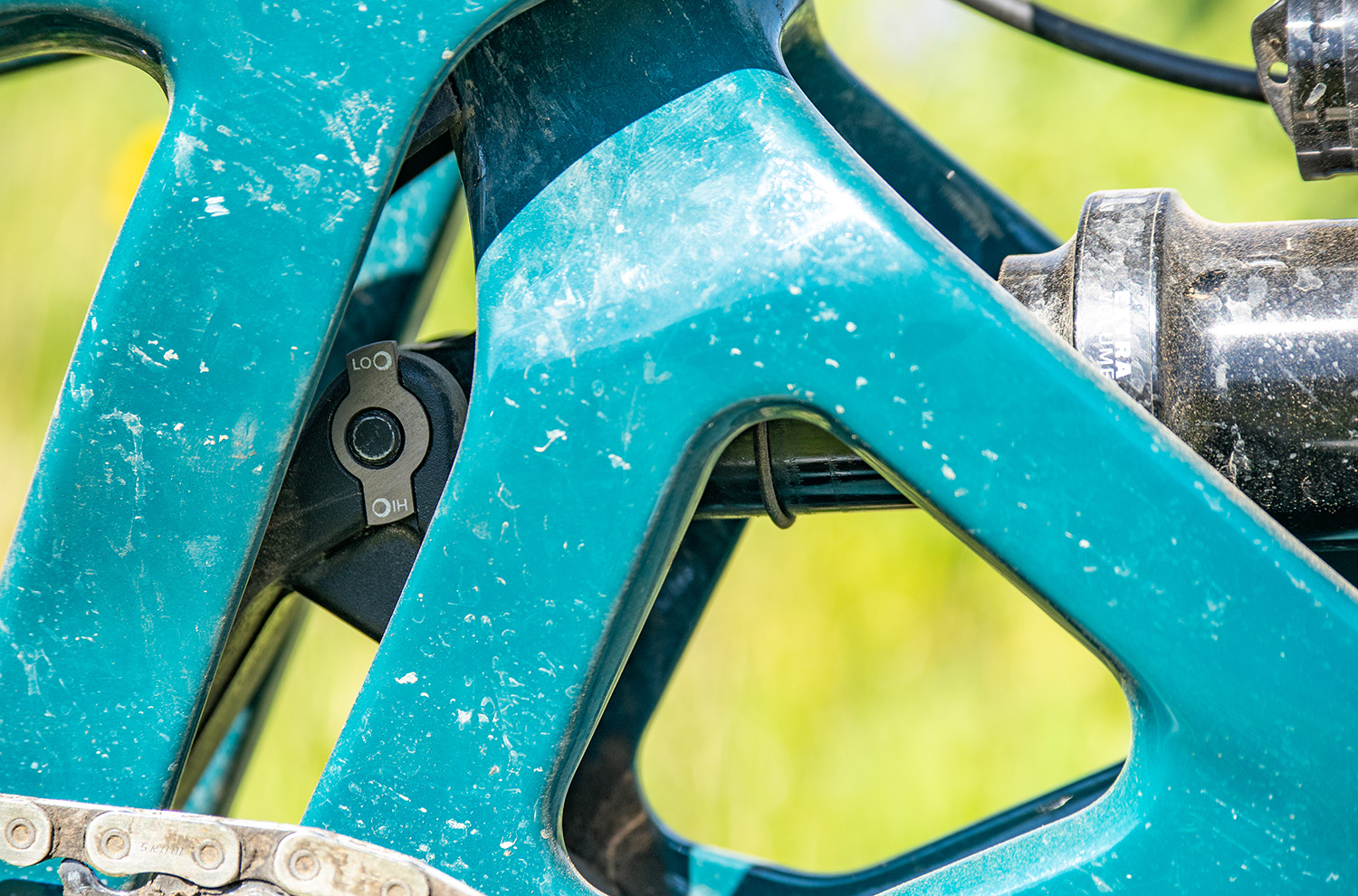
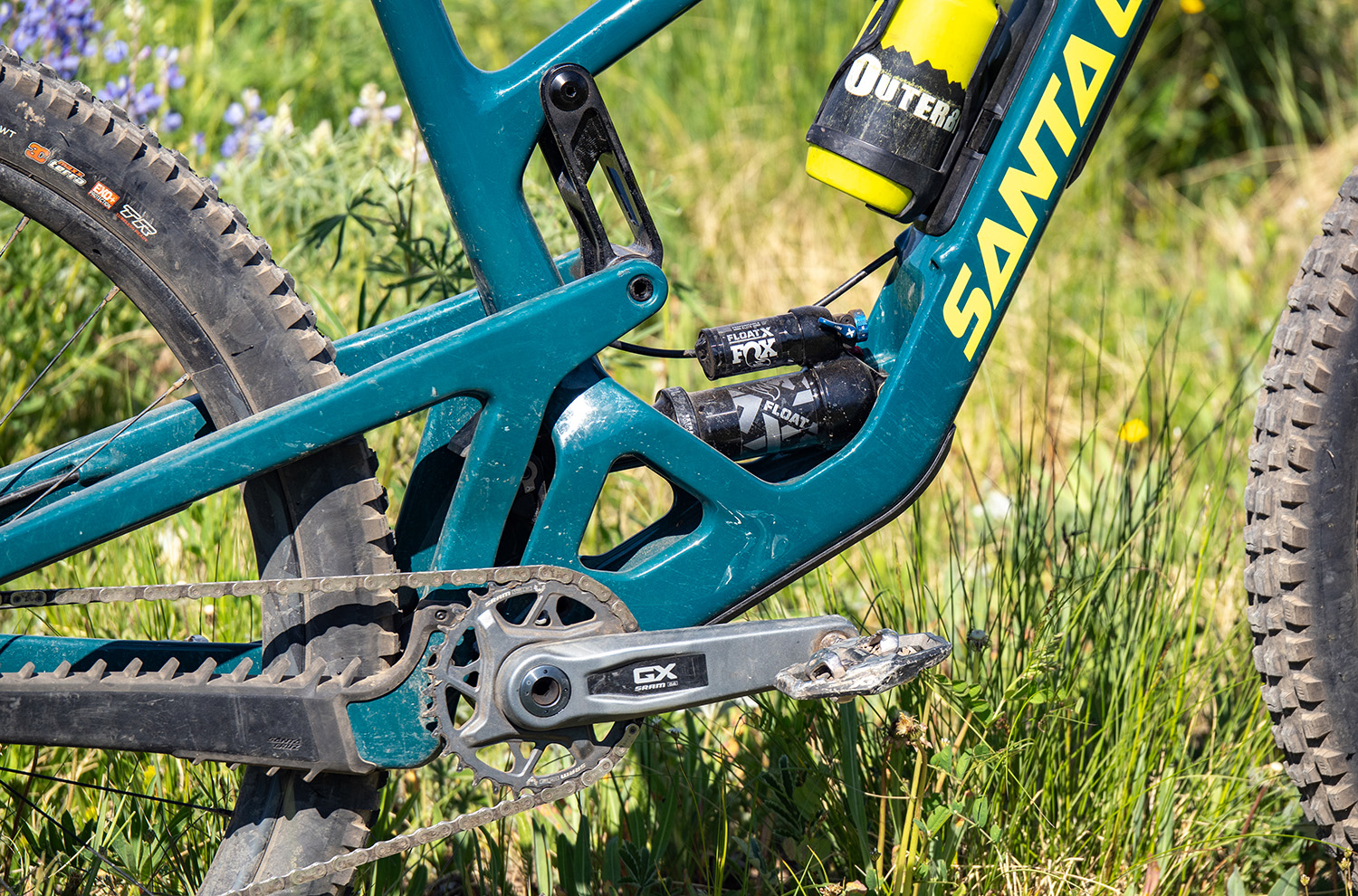
I still only have good things to say about SRAM GX AXS Transmission, and the SRAM Maven Bronze brakes were another highlight on the Hightower. They paired quite nicely with the 180 mm rotors front and back on our Hightower, and since this bike has so much inherent traction, I did not feel as if the Mavens were too strong for it. The Mavens offered excellent modulation and power, though heavier riders might be grateful that most of the newest “2026” Hightowers will be coming with 200 mm rotors up front, as that’s the smallest size you can run on the new Fox 36. I’ve been a fan of the Maxxis Assegai front and Minion DHR II rear tire combination for some time now, so I’m happy to see them on the Hightower. I’m especially grateful that the Assegai up front comes in the MaxxGrip compound, which was certainly welcome on steep terrain. Some folks might prefer to run tires with more durable casing than Maxxis’ EXO+, but you know who you are.
I had no issues with the RaceFace ARC 30 Aluminum wheelset. They stayed true and tensioned throughout our test period, and while not quite as precise as a carbon option such as Santa Cruz’s own Reserve 30|HD carbon rims, the ARC 30s certainly did feel smooth. I was pleased with all the component choices on the Hightower as well. Additionally, I enjoyed and utilized the down tube storage compartment, in which it was easy to stuff a standard 29” tube, multi-tool, CO2 cartridge and inflator, a tire lever, and some tire plugs, almost entirely eliminating the need for a pack on shorter rides.
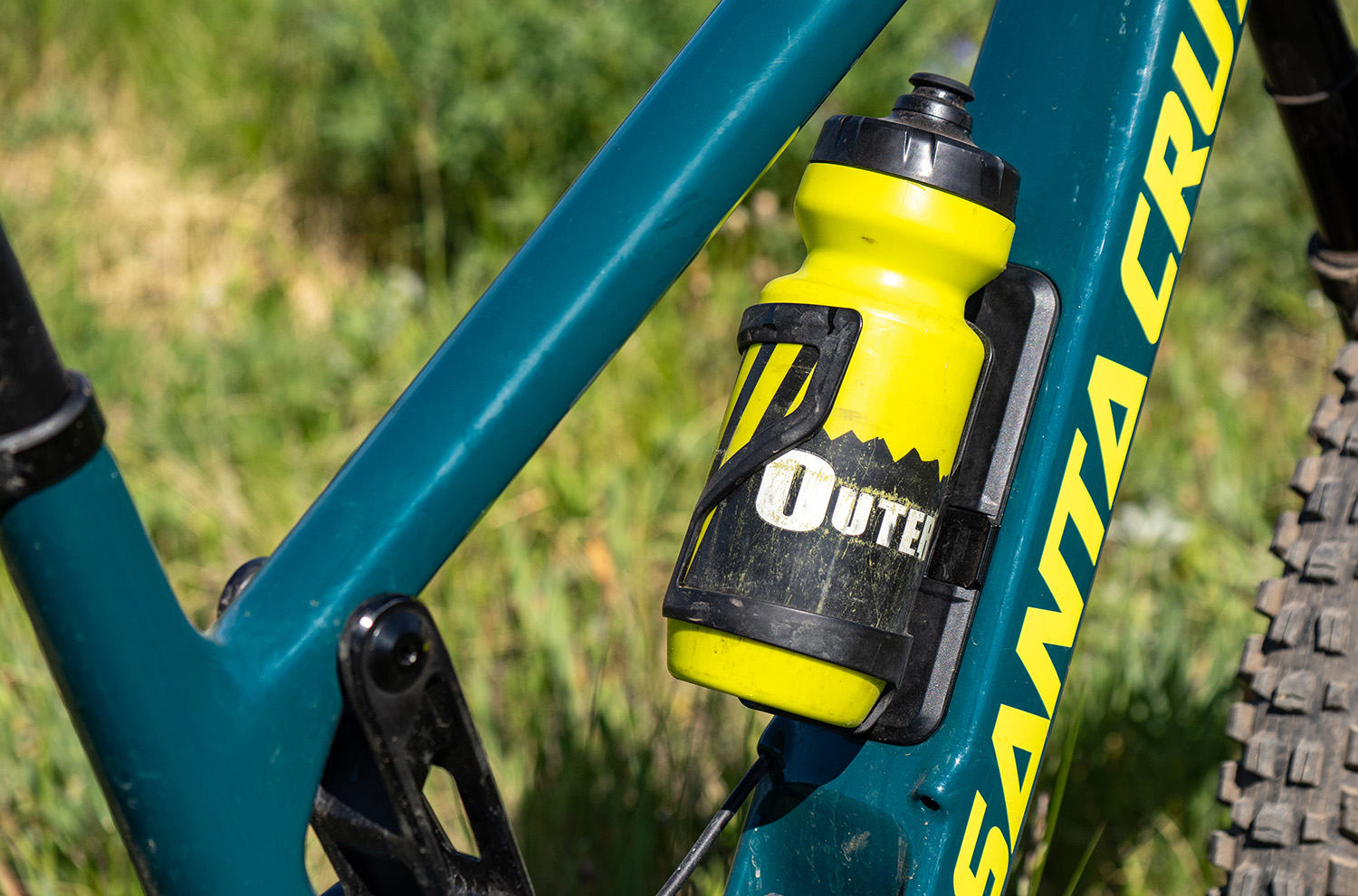
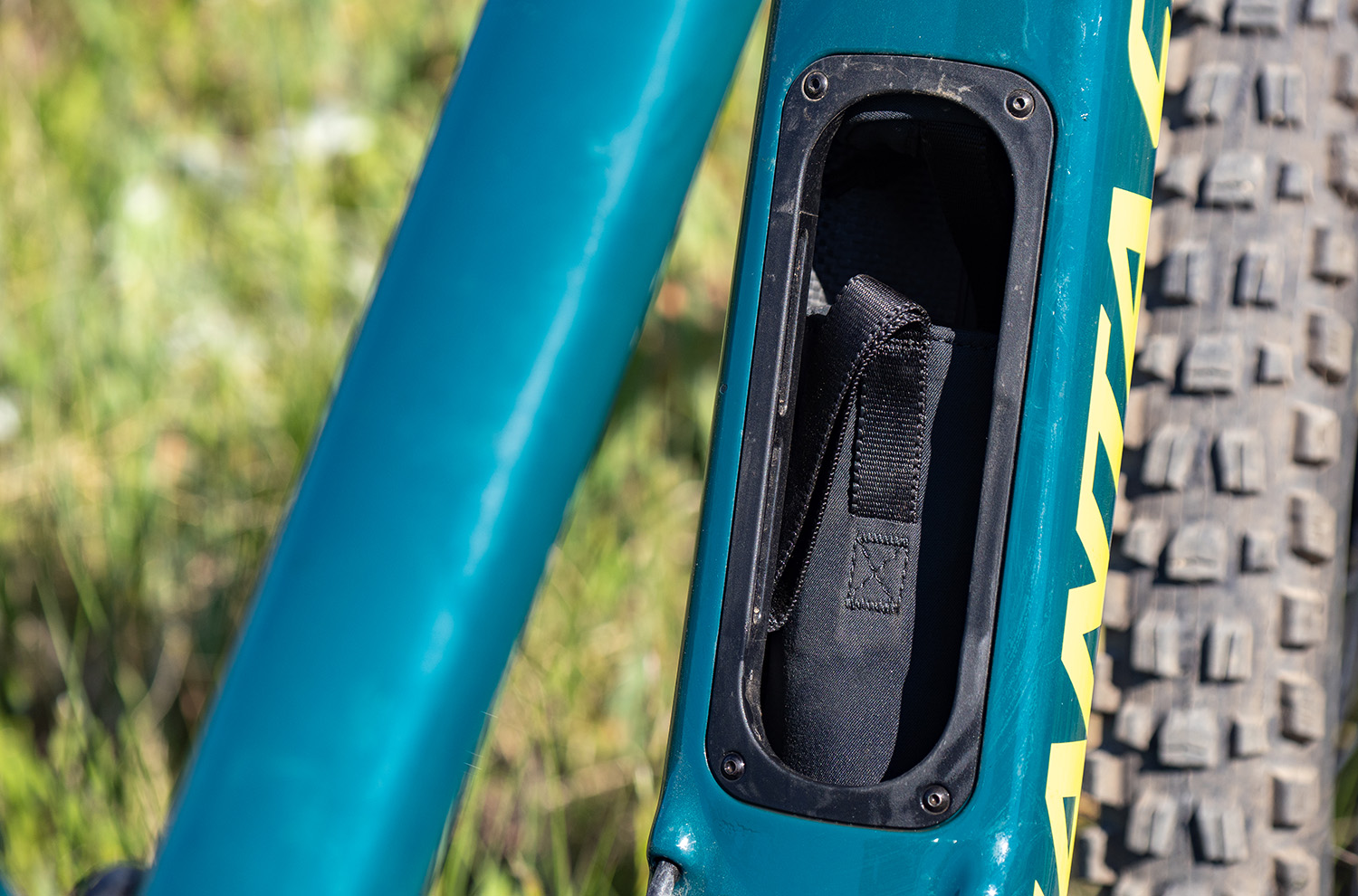
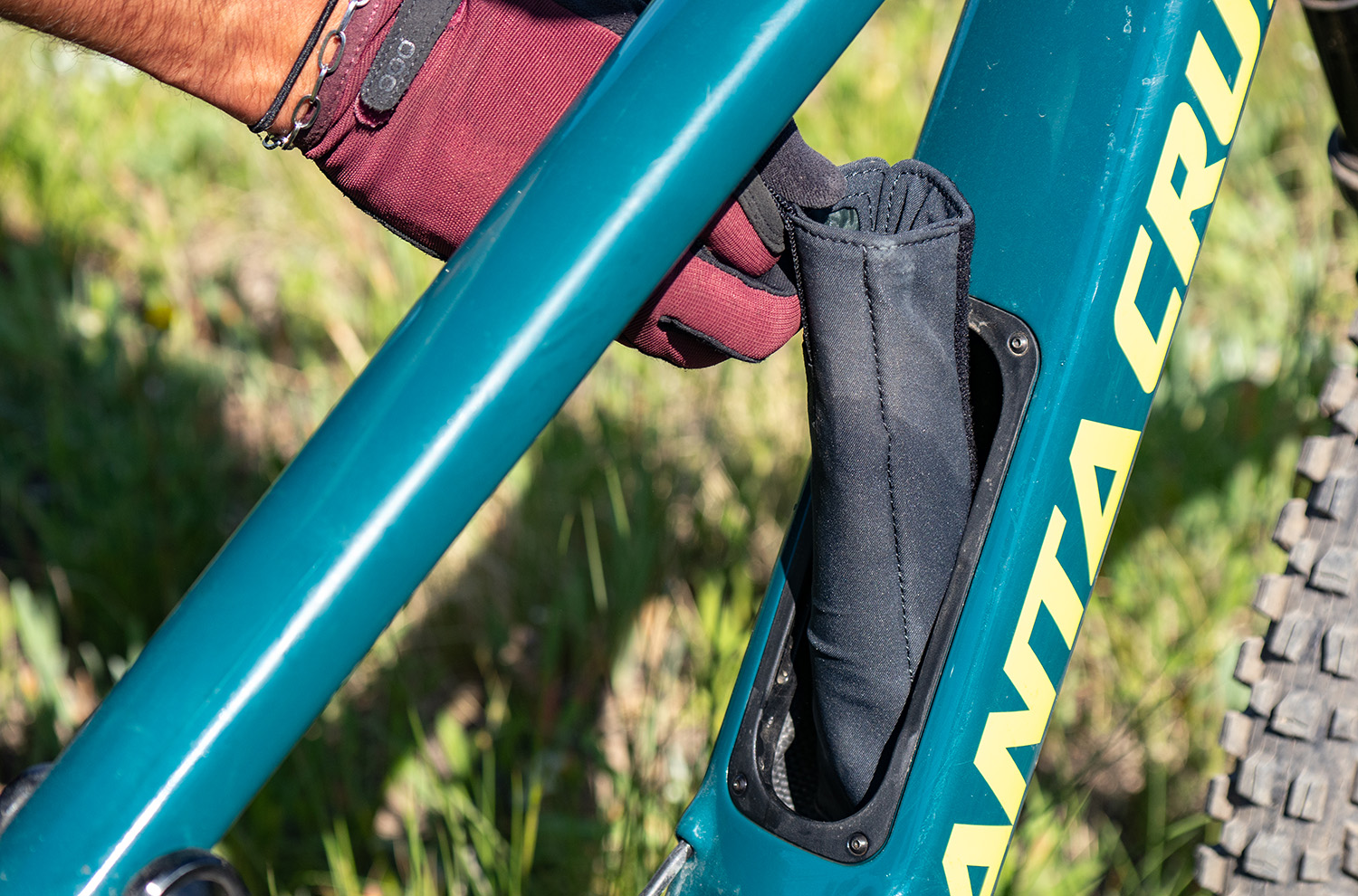
Who’s It For?
Riders who are after a modern, capable All-Mountain bike that has a specialty in tackling steep, demanding descents without feeling too niche. The Hightower only really feels out of place on the flattest, easiest XC trails and the steepest DH courses, leaving a ton of variety in the middle. It pedals more efficiently than most Enduro bikes, but descends more confidently than most Trail bikes with less travel. If you ride a variety of trails but get especially excited about the steep, fast stuff, but a full-on Enduro bike feels like “too much” for you, the Hightower is an excellent choice for beginners to expert riders alike.
Bottom Line (For Now)
The latest Santa Cruz Hightower is certainly the most downhill-capable, and it does a great job at tackling just about every trail out there, while feeling the most at home on steep, rowdy trails. It still remains a great option as a do-it-all, one-bike quiver, but as mountain biking has progressed, so has the Hightower, almost exemplifying the phenomenon of mid-travel All-Mountain bikes becoming more and more capable on demanding descents.
Share this post:
Deep Dive Comparisons
BLISTER+ members and those who purchase our Digital Access Pass can check out our Deep Dive comparisons linked below. Get our Digital Access Pass to view all our Deep Dives and Flash Reviews, or become a BLISTER+ member today to get access to that and a LOT more, including the best worldwide Outdoor Injury Insurance, exclusive deals and discounts on skis, personalized gear recommendations from us, and much more.
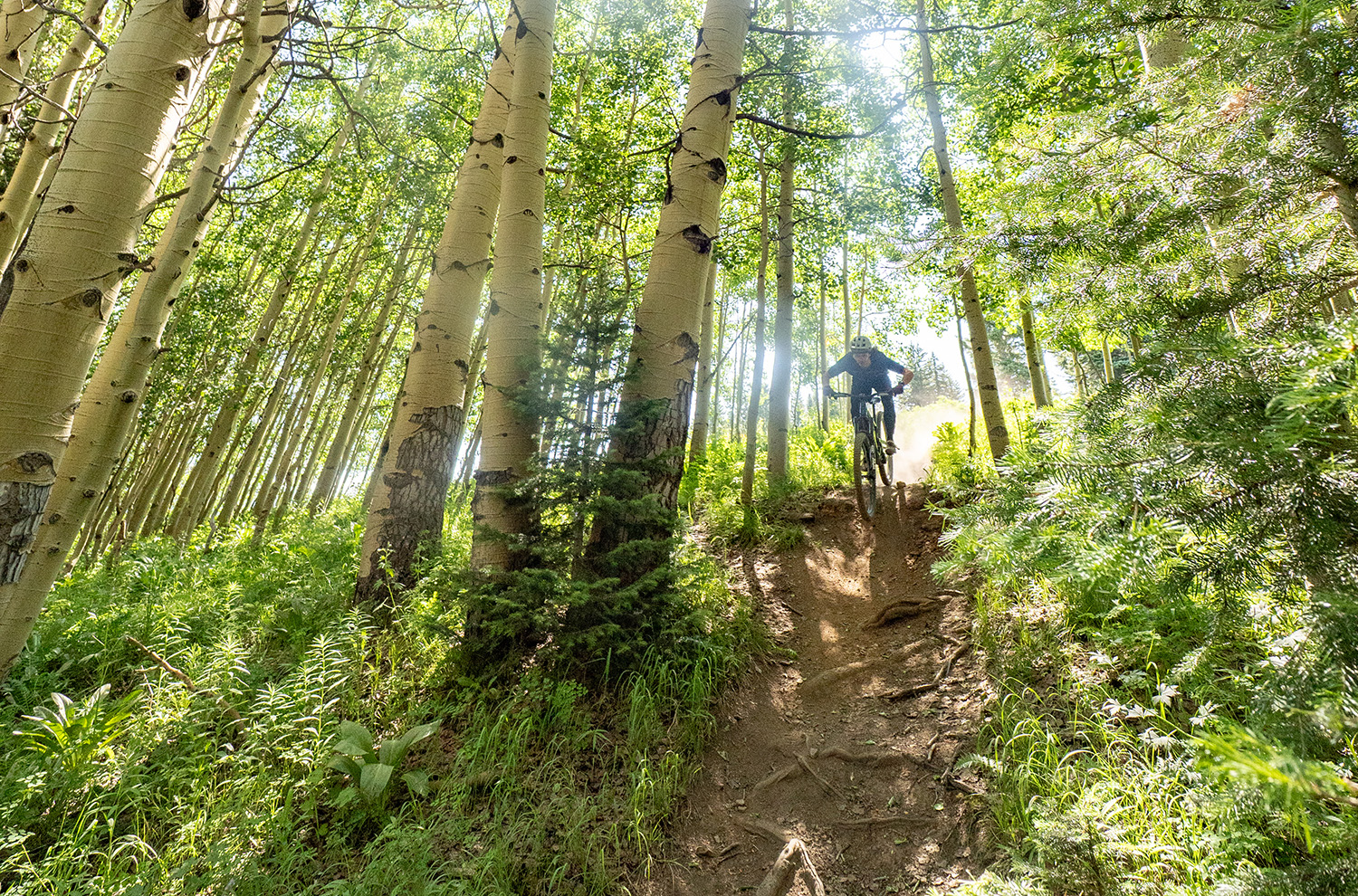
Deep Dive: Santa Cruz Hightower 4
We compare the Santa Cruz Hightower 4 to the Santa Cruz Hightower 3, Santa Cruz Bronson 5, Santa Cruz Megatower 2, Santa Cruz Tallboy 5, Specialized Stumpjumper 15, Ibis Ripmo V3, Spot Mayhem 140, Cannondale Habit, Pivot Shadowcat, Transition Sentinel V3, and Trek Fuel EX Gen 7.
Blister’s Flash Reviews and Deep Dives are accessible to those who purchase one of our paid subscriptions
To get our comprehensive Deep Dives and our initial, unfiltered reports on new gear, become a member and receive many other services, deals, and discounts.
If you’re already an active member, please log in.
(If you’re already logged in and a member in good standing and seeing this message in error, please refresh this page in your browser.)

What would you think about putting a coil on this? Does it defeat the purpose or would it further improve it’s descending chops?
I ride a Megatower v2 like an All Mountain bike everywhere I go (and am arguably overbiked for my skill level, but not necessarily for my local trails). I have now taken the new Hightower 4 out 3 times, most recently on the rowdiest my intermediate skills allow. The short is that the Hightower maneuvers better, and was easier to change lines down techy descents. However the suspension (Fox 36 non-GlideCore, and Float X) was overwhelmed on repeated braking bumps and chunky rock gardens. In my opinion, a DHX2 Coil or big air can like X2 might be the ticket.
For pedaling I was surprised that it didn’t really feel easier on sustained climbs (but it was faster to spring on flat trails and tarmac).
I think a coil could work. It would definitely get it closer to a “mini Megatower,” but given how well the Hightower already descends, it could be a good fit.